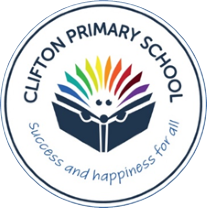Geography
Our aims are to fulfil the requirements of the National Curriculum for Geography; providing a broad, balanced and differentiated curriculum; ensuring the progressive development of geographical concepts, knowledge and skills; and for the children to develop a love for geography.
Geography teaching at Clifton Primary School has a wide application to everyday life, teaching the children to enjoy learning about the world and to have a better understanding of how people live in different locations.
Our Geography is taught through the CUSP Curriculum, in order to study where places are found, what they are like and the relationships between people and their environments CUSP geography draws upon several powerful sources of knowledge: substantive, disciplinary, geographical analysis and substantive concepts.
Substantive knowledge: This is the subject knowledge and explicit vocabulary used to learn about the content. Common misconceptions are explicitly revealed as non-examples and positioned against known and accurate content as pupils become more expert in their understanding. Misconceptions are challenged carefully and in the context of the substantive and disciplinary knowledge. In CUSP Geography, it is recommended that misconceptions are not introduced too early, as pupils need to construct a mental model in which to position new knowledge.
Disciplinary knowledge: This is the use of knowledge and how children become a little more expert as a geographer by Thinking Geographically. CUSP draws upon the work of Cresswell, Lambert and Massey to offer suggestions about the discipline of geography.
Geographical analysis is developed through selecting, organising and integrating knowledge through reasoning and making sense of the content in response to structured questions and well-designed tasks that cause children to think hard as geographers.
Substantive concepts are the big ideas, and the golden threads, that run through a coherent and cohesive geography curriculum. They can include place, space, scale, interdependence, physical and human processes, environmental impact, sustainable development, cultural awareness and cultural diversity. Concepts such as change through erosion are taught through explicit vocabulary instruction as well as through the direct content and context of the study.
